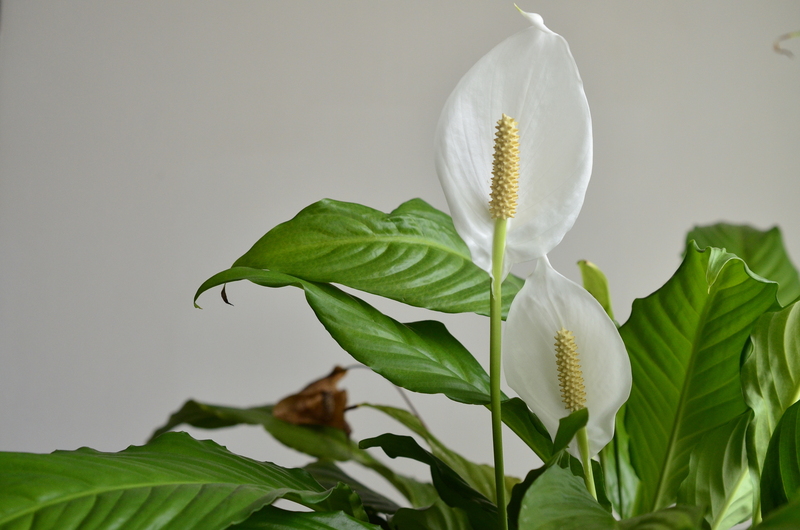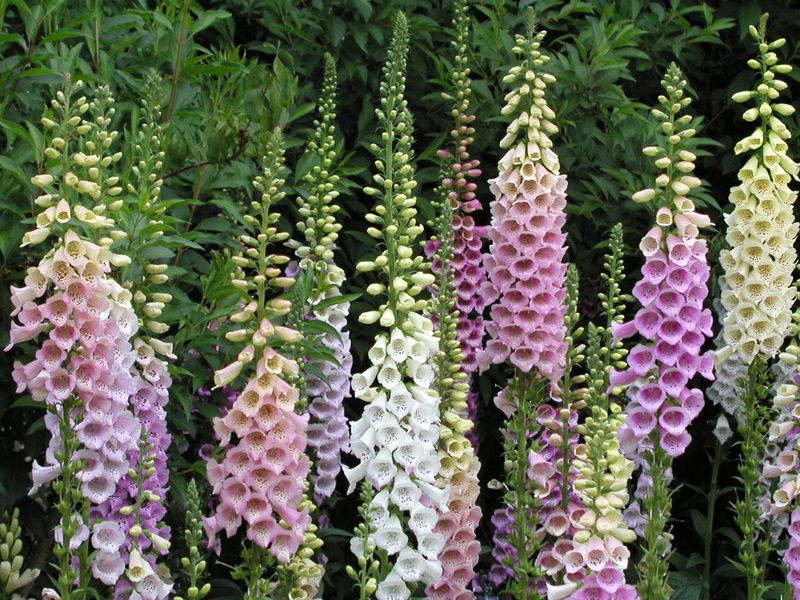Guide to Planting a Playful and Child-Safe Garden Haven
Posted on 01/09/2025
Guide to Planting a Playful and Child-Safe Garden Haven
Every parent dreams of creating a safe, magical outdoor space for their children--a garden that combines fun, adventure, and peace of mind. With the right planning and thoughtful plant selection, you can establish a child-safe and playful garden haven that stimulates creativity, encourages exploration, and ensures every moment spent outdoors is safe and enjoyable. This comprehensive guide will walk you through every step of designing, planting, and maintaining a family-friendly garden space that your little ones will love.

Why Create a Child-Safe and Playful Garden?
Modern families are recognizing the immense value of outdoor play. Not only does a garden provide children with space to explore nature, but it also supports their physical, emotional, and developmental growth. However, the safety of children in the garden should remain a top priority. Creating a playful, child-friendly oasis doesn't mean sacrificing aesthetics--rather, it's about blending beauty with safety and adventure.
- Enhanced Creativity: Gardening and outdoor play stimulate children's imagination and curiosity.
- Physical Exercise: Kids naturally become more active, fostering better health and coordination.
- Learning Opportunities: Gardens provide firsthand lessons on biology, ecology, and sustainability.
- Quality Bonding Time: Family gardening sessions create lasting memories and strengthen relationships.
Planning Your Kid-Friendly Garden Sanctuary
Before you plant a single flower, assess your available space and consider how your family will use the garden. Keeping children safe and engaged requires a thoughtful layout, plant selection, and feature integration.
1. Assessing the Space for Safety and Fun
- Location Matters: Choose a spot that's visible from the house, has good light exposure, and is easy to supervise.
- Sunlight & Shade: Ensure a balance--kids need sunshine, but adequate shade is essential for sun protection, especially during playtime.
- Access and Boundaries: If your garden borders streets or neighboring properties, install child-proof fencing and secure gates.
- Water Hazards: Always cover or fence off ponds and remove access to deep water features for toddlers and young children.
2. Designing for Play and Discovery
A playful child-safe garden should include designated areas for distinct activities:
- Active Play Zones: Reserve open turf or soft-surfaced space for running, ball games, or tumbling.
- Secret Spaces: Hideaways like willow dens or small teepees fuel imaginative play and offer cozy retreats.
- Exploration Trails: Curved paths of pebbles, stepping stones, or mulch can guide little feet on adventures.
- Garden Beds for Kids: Dedicate raised beds or containers for children's own plants to nurture responsibility and pride.
- Nature Stations: Integrate bird feeders, butterfly gardens, or bug hotels so kids can observe and interact with wildlife safely.
Choosing Safe Garden Plants for Children
Plant selection is pivotal to creating a secure garden haven. Many common ornamentals are toxic or prickly, posing unnecessary risks to curious hands and mouths. Here's how to curate a child-friendly palette for your playful landscape:
1. Safe, Non-Toxic Plant Selection
- Edible Plants: Strawberries, raspberries, blueberries, and cherry tomatoes invite safe foraging and make gardening deliciously rewarding.
- Herbs: Plant non-toxic, fragrant herbs like mint, basil, parsley, and chives--perfect for scent play and sensory learning.
- Flowering Favorites: Sunflowers (Helianthus annuus), marigolds (Tagetes), pansies, calendula, and nasturtiums are beautiful, durable, and non-toxic to little ones.
- Soft-Leafed Plants: Choose lamb's ear (Stachys byzantina), ferns, and ornamental grasses for tactile sensory play without risk of scratches.
2. Plants to Avoid in a Kid-Safe Garden
Be vigilant and avoid the following potentially dangerous plants:
- Foxglove (Digitalis) - toxic if ingested
- Oleander (Nerium oleander) - highly poisonous
- Daffodils and tulips (bulbs are toxic)
- Yew (Taxus) - poisonous berries and foliage
- Mistletoe, belladonna, nightshade, and laburnum - all toxic
- Roses or any thorn-bearing plants--prickles can injure little hands
Ensuring Safe Play Surfaces
The right groundcover underpins a safe and playful outdoor garden zone:
- Turf Grass: Durable and soft, classic lawn areas are perfect for active games and gentle falls.
- Artificial Grass: Low-maintenance, always green, and great for allergy-prone kids.
- Mulch and Bark Chips: Ideal under play equipment, but always ensure it's untreated and free of sharp splinters.
- Clover or Creeping Thyme: Soft, ground-hugging alternatives to grass, ideal for low-traffic areas with added sensory appeal.
Fun and Functional Garden Features for Children
Turn your child-friendly garden into an imaginative adventure land with these inspiring additions:
1. Safe Play Equipment
- Swings and Slides: Position on level ground with deep, soft fall zones beneath. Secure posts and regularly check for wear.
- Sandpits: Choose covered designs to keep debris and animals out; use non-toxic, washed play sand only.
- Water Play: Install shallow splash pads or water tables in shaded areas; never leave standing water unattended.
- Teepees and Dens: Living willow tunnels or fabric tents offer magical hideaways for all-weather fun.
2. Interactive Elements
- Musical Features: Wind chimes, xylophones, or 'music walls' made from kitchenware spark creative play.
- Sensory Paths: Arrange sections of smooth pebbles, soft moss, and bark chips for barefoot exploration.
- Miniature Gardens: Fairy, dinosaur, or bug-themed gardens provide immersive make-believe zones.
- Art Spots: Outdoor chalkboards or painting easels let children express their artistic flair amid nature.
3. Family Gardening Activities
Make garden care a team effort:
- Planting Days: Choose easy seeds or seedlings that children can handle--beans, sunflowers, or snapdragons work well.
- Crafts From Nature: Collect leaves, twigs, and petals for creative garden art projects or homemade mobiles.
- Wildlife Watching: Log new bird or insect visitors in a nature notebook each week.
Safety Guidelines for a Child-Friendly Garden
Safety is always the foundation of a playful garden sanctuary for kids. These cardinal rules help maintain a secure, happy environment:
- Supervision First: Always monitor children outdoors, especially when using tools, equipment, or near water.
- Lock Sheds and Stores: Secure all garden chemicals, sharp tools, and power equipment well out of children's reach.
- Regular Maintenance: Inspect swing sets, climbing frames, and paths for signs of wear or hazards.
- Avoid Allergens: Know common garden allergens (like certain pollens or stinging plants) and avoid planting them.
- Check for Stingers: Watch for bees, wasps, and fire ants--especially near play zones; address nests responsibly.
- Teach Plant Safety: Educate children never to eat unfamiliar plants and to always wash hands after gardening or outdoor play.
Practical Tips to Keep Your Playful Garden Haven Beautiful and Safe
- Use Natural, Non-Toxic Treatments: Opt for organic fertilizers and natural pest control to reduce chemical exposure.
- Choose Child-Proof Tools: Provide kid-sized spades, watering cans, and gloves for supervised gardening.
- Install Secure Storage: Lock all fertilizers, compost activators, and even seeds in a high, out-of-reach location.
- Regularly Prune and Weed: Keep play areas clear, minimize trip hazards, and prevent overgrowth.
- Label Young Plants: Clearly mark new plantings to prevent accidental trampling or uprooting by enthusiastic kids (or pets!).
- Install Gentle Lighting: Add solar garden lights or string fairy lights for magical, safe evening play and easy supervision.
Sensory Play and Learning in the Garden
A playful, child-safe garden is a sensory wonderland. Design different zones to stimulate each sense:
Touch
- Plant soft lamb's ear, ornamental grasses, and furry-leafed herbs for tactile delight.
- Add smooth pebbles, water features, or fine sand areas for hands-on fun.
Sight
- Grow bright, diverse flowers and foliage for a burst of color.
- Hang mirrors or install garden sculptures for surprise visual interest.
Sound
- Wind chimes, bird songs, and trickling water features create a soothing garden soundtrack.
- Crunchy leaves or gravel paths add playful auditory feedback.
Smell
- Fragrant lavender, rosemary, and scented geraniums inspire endless sniffing and learning.
Taste
- Herb and berry gardens give children safe, edible rewards for their curiosity.
Additional Playful Ideas to Inspire Your Child-Safe Garden
- Chalkboard Fencing: Paint a section of fencing with blackboard paint for instant outdoor artwork and doodles.
- Stepping Stone Pathways: Let kids help make personalized stepping stones with handprints, mosaics, or painted names.
- Grow a Living Teepee: Train climbing beans or sweet peas up bamboo canes for a beautiful, edible hideout.
- Butterfly and Bee Gardens: Attract pollinators with safe, nectar-rich flowers like calendula and zinnias--teach respect, not fear, for these gentle insects.
- Mud Kitchens: Set up an area with old pots, pans, and utensils for safe, messy pretend play. Use only clean water and natural materials.
- Story Nooks: Add an outdoor bench and a weatherproof box for picture books--nature storytime awaits!

Seasonal Care for Your Playful and Child-Safe Garden Haven
- Spring: Involve kids in seed sowing, tidying beds, and planning new features. Watch wildlife return and flowers bloom!
- Summer: Prioritize shade and water play. Mulch well to prevent weeds and keep surfaces cool for little bare feet.
- Autumn: Collect fallen leaves for crafts or compost; plant bulbs together for next spring's surprises.
- Winter: Bird feeders and fairy lights keep the space magical even when it's cold. Plan next year's planting together, and enjoy frosty mornings or a winter picnic!
Conclusion: Grow a Garden Full of Memories and Laughter
Planting a playful and child-safe garden haven is an investment in your children's well-being, happiness, and connection with nature. By selecting non-toxic plants, incorporating thoughtful design features, and maintaining strict safety measures, you can cultivate a magical outdoor retreat that inspires play, learning, and wonder--season after season.
With these tips and creative ideas, your family garden will blossom into a colorful, secure paradise where young imaginations flourish, and laughter forever echoes in the air. Start planning your haven today, and let the adventure begin!

